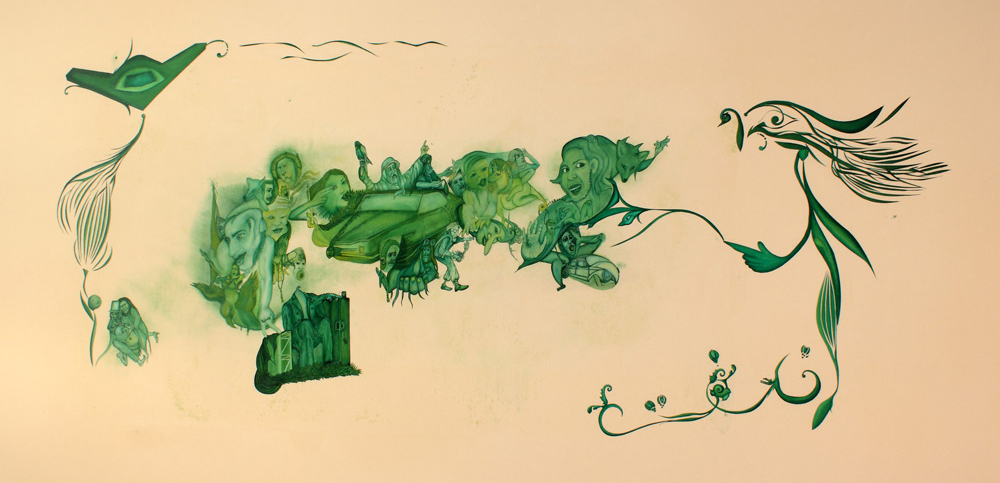
Kerosene (Naft), 2012
Acrylic on Canvas, 160 x 250 cm.
... Kerosene of Entekhabi’s well recognized iconography derived from his Persian ancestry: the sinuous and sensuous figures of men and women in garb associated with his cultural heritage are articulated with delicate handiwork. Curvaceous bodies intertwine as well as disperse across the picture plane in compositional sophistication as representational and abstract elements spill and spiral here and there in an organic and ecstatic fluidity. Petroleum, which is intrinsic to the (political) economies of Arabic states and the West as well, spills on its side. The polyvalence of the work is inescapable: Entekhabi offers a reframing of Aladdin’s lamp and the fabled One Thousand and One Nights. But his citation of iconic Arabian literature becomes a flashpoint in addressing the conditions of social relations within contemporary culture: men in conservative attire rub up against a woman in sunglasses with headscarf underscoring an historical dichotomy between male and female, and their respective analogues: culture/nature, tradition/modernity, and orthodoxy/heterodoxy. To accentuate these cultural and historical antagonisms even further, women shape-shift into an array of creatures amounting to an anthro-zoomorphic bestiary.
Formally it is all rendered in a kind of light red monochrome. The work contains elements in which one cannot avoid the associative violence harking back to a pre-modern if not medieval past.
Taken together, the works articulate the cultural history of kerosene through a complex and multilayered narrative of politics of the body and the body politic. As if this was not enough to distinguish these compositions, Entekhabi intertextually weaves, however subtle and disparate, the history of kerosene into his work: it is generally stored in blue containers, utilized by many people throughout the world both today and historically, and was first distilled from petroleum in the mid 800s by the Persian scholar Razi.
... thus it is a signifier par excellence for Entekhabi’s reframing of it within the context of East/West political and cultural difference.
Excerpt from the article Nothing Gold Can Stay by Raúl Taylor Zamudio
Raúl Taylor Zamudio is a New York-based independent curator, art critic, art historian and educator.
Kerosene (Naft) Painting was exhibitetd at:
2021: Instigator, e1 Art Gallery, Tehran, Iran (solo show)
2015: I, Alexander Private Salon, Berlin, German
شهرام انتخابی 尚莱姆_恩特卡比
Shahram Entekhabi is an German-Iranian- artist, curator & architect, currently living & working across Tehran, Iran - Berlin, Germany and Europe.

